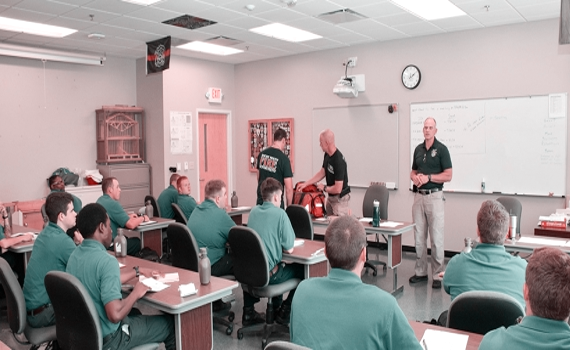
Firefighter Education
When it comes to firefighter education, there is no amount of firefighter training that can prepare you for some of the things you will encounter in the field. Over the past few decades, firefighter death rates have increased because they are lacking in some areas of training that are now being incorporated into firefighter education. Understanding some of new and innovative training and operational concepts are an important part of today’s firefighter classes.
Learning about tactical ventilation, flashover or compartment fire behavior, high-rise firefighting tactics and water flow-rate requirements are just part of the things that are now part of firefighter education. Understanding tactical command decision making and how to optimize the limited resources and staffing during critical tasks are part of the analysis that has to be learned when it comes to saving the lives of firefighters during the course of fire defense. Improvements have been made in firefighter education over the past decade, but every emergency situation puts lives at risk and can call for different tactical decisions.
Understanding fire science and going through firefighter training is only the beginning of a successful career in firefighting. The mental and physical demands can be more than some people bargain for when they first decide they want to be a fireman. Emergency situations involve any number of chemicals, fuels, explosives, and other causes, and firefighters must be prepared to take the right approach and remain safe through the prevention or defensive process of firefighting in these situations.
Some of the firefighter education can be received online through academics that are required. Math, Chemistry, English, and Fire Science are just part of what a firefighter education entails. When it comes to living burning classroom settings, firefighter training becomes more realistic, but it might not be as dangerous as the real-life settings they are liable to encounter. Being able to communicate and work together as a team is essential when it comes to firefighting and many firefighter training courses are now enforcing these important ingredients.
When it is analyzed where the past breakdowns have occurred in firefighter education, there are a few things that have lead to this catastrophic system failure that has cost more firefighters their lives. Lack of firefighting experience, inadequate firefighter and command training, and complacency, or lack of discipline, seems to be the primary reasons. Firefighter training classes and firefighter education courses focus on learning from past strategic and tactical errors, especially those that are easily preventable like adequate briefings and effective communication. Any deviation from normal operating procedures or failure to undertake effective actions can result in loss of life when it comes to firefighting.
For this reason, it is necessary that firefighters get all of the firefighter education they can. It used to be that fire department might only require a high school diploma, but some of them are requiring college degrees. Because fire departments only accept applicants every couple of years, the competition has become more skilled and educated. Degrees in fire science and EMT or paramedic certifications are just part of the firefighter education backgrounds that some applicants possess. Through proper and increased firefighter training, the lives of many firemen can be saved and more innovative techniques are being used in firefighter education today.
Firefighter Education